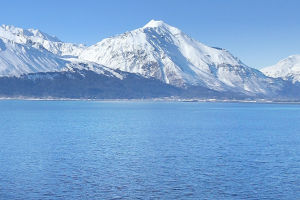Lakes are fascinating natural formations that add beauty and charm to the earth's surface.
They can be formed by different processes, resulting in a diversity of lake types.
Lakes can be categorized into tectonic lakes, glacial lakes, crater lakes, weir lakes, wind-formed lakes, and hydraulic alluvial lakes.
Understanding how each type of lake is formed can provide insights into the natural processes that shape our world.
Tectonic lakes are formed by the movement of the earth's crust, leading to the depression of the land and water accumulation in the resulting basin.
This process occurs over millions of years and is responsible for the formation of some of the world's largest and deepest lakes, such as the Caspian Sea, Lake Baikal, and the Great Lakes of North America.
Glacial lakes are formed by the erosion and deposition of rocks and sediments by glaciers.
Glaciers are massive bodies of ice that slowly move across the land, carving out depressions and valleys.
As they move, glaciers transport rocks and sediment, which can form a dam or a barrier, causing water to accumulate and form a lake.
Some famous glacial lakes include Lake Louise in Canada and Lake Tahoe in the United States.
Crater lakes are formed when a volcano ejects lava and debris, which then pile up around the crater.
Over time, water accumulates in the resulting depression, forming a lake.
Some famous examples of crater lakes include Lake Toba in Indonesia and Crater Lake in the United States.
Weir lakes are formed by natural disasters such as earthquakes, landslides, debris flows, moraines, or volcanic eruptions.
These events can cause a blockage in a river or stream, leading to water accumulation and the formation of a lake.
The formation of Lake Kivu in Rwanda is an excellent example of a weir lake.
Wind-formed lakes, also known as blowout lakes, are formed by wind erosion over long periods of time.
Wind action can carve out depressions in the ground, which fill up with water and form a lake.
These lakes are commonly found in arid and desert regions, where wind erosion is prevalent.
Examples of wind-formed lakes include Hutt Lagoon in Australia and Lake Urmia.
Hydraulic alluvial lakes are formed by water erosion and sediment accumulation.
These lakes are usually located near rivers and are formed when sediments carried by the river settle and form a barrier, creating a lake.
Lake Victoria in Africa and the Mississippi River Delta in the United States are examples of hydraulic alluvial lakes.
Understanding the different types of lakes and how they are formed can provide valuable insights into the natural processes that shape our world.
Tectonic, glacial, crater, weir, wind-formed, and hydraulic alluvial lakes each have unique characteristics that make them a valuable part of our planet's ecosystem.
Whether you are a scientist or simply a nature enthusiast, learning about lakes can be an exciting and rewarding experience.


